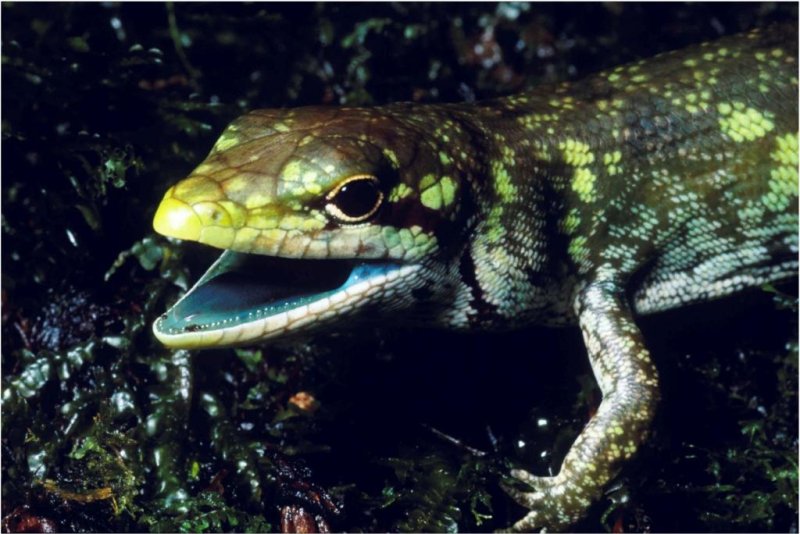The high concentrations of biliverdin, a toxic green bile pigment, causes the blood and the body of New Guinea's Prasinohaema prehensicauda lizard to glow a bright lime green. Photo by Chris Austin/LSU
May 17 (UPI) -- The blood of a unique group of lizards in New Guinea runs green, a bright lime green, thanks to the excess of biliverdin, a green bile pigment, flowing through their veins.
It should kill them, but it doesn't. It even appears to offer the lizards an advantage. Finally, scientists have a few clues as to how and why.
In humans, biliverdin is toxic and causes jaundice. In members of the genus Prasinohaema, the green-blooded skinks, biliverdin causes no problems, despite a concentration 40 times greater than the amount lethal to humans.
"In addition to having the highest concentration of biliverdin recorded for any animal, these lizards have somehow evolved a resistance to bile pigment toxicity," Zachary Rodriguez, a doctoral candidate at Louisiana State University, said in a news release. "Understanding the underlying physiological changes that have allowed these lizards to remain jaundice-free may translate to non-traditional approaches to specific health problems."
In a new survey of New Guinea lizard diversity, Rodriguez and Chris Austin, a professor biological sciences at LSU, documented 51 species of skinks, including six green-blooded species, two of which are new to the literature.
Rodriguez, Austin and their research partners described the findings this week in the journal Science Advances.
Their analysis suggests the Prasinohaema genus consists of four different lineages, all tracing back to differed red-blooded ancestors.
"We were excited by the complex history of these animals and surprised by the breadth of green-blooded lineages across lizards," Rodriguez said.
Because green-bloodedness evolved independently four different times, researchers believe the trait is adaptive and offers an important evolutionary advantage. Scientists have previously documented insect, fish and frog species that benefit from slightly elevated levels of biliverdin.
Previous studies suggest bile pigments can take on an antioxidant role, finding and neutralizing free radicals. Their presence can also help prevent disease during in vitro fertilization. However, scientists still aren't certain about the specific benefits biliverdin offers Prasinohaema skinks.
"The green-blooded skinks of New Guinea are fascinating to me as a parasitologist because a similar liver product, bilirubin, is known to be toxic to human malaria parasites," said Susan Perkins, curator and professor at the Sackler Institute for Comparative Genomics. "Ongoing work with the Austin lab examines the potential effect of the green blood pigment on malaria and other parasites that infect these lizards."















